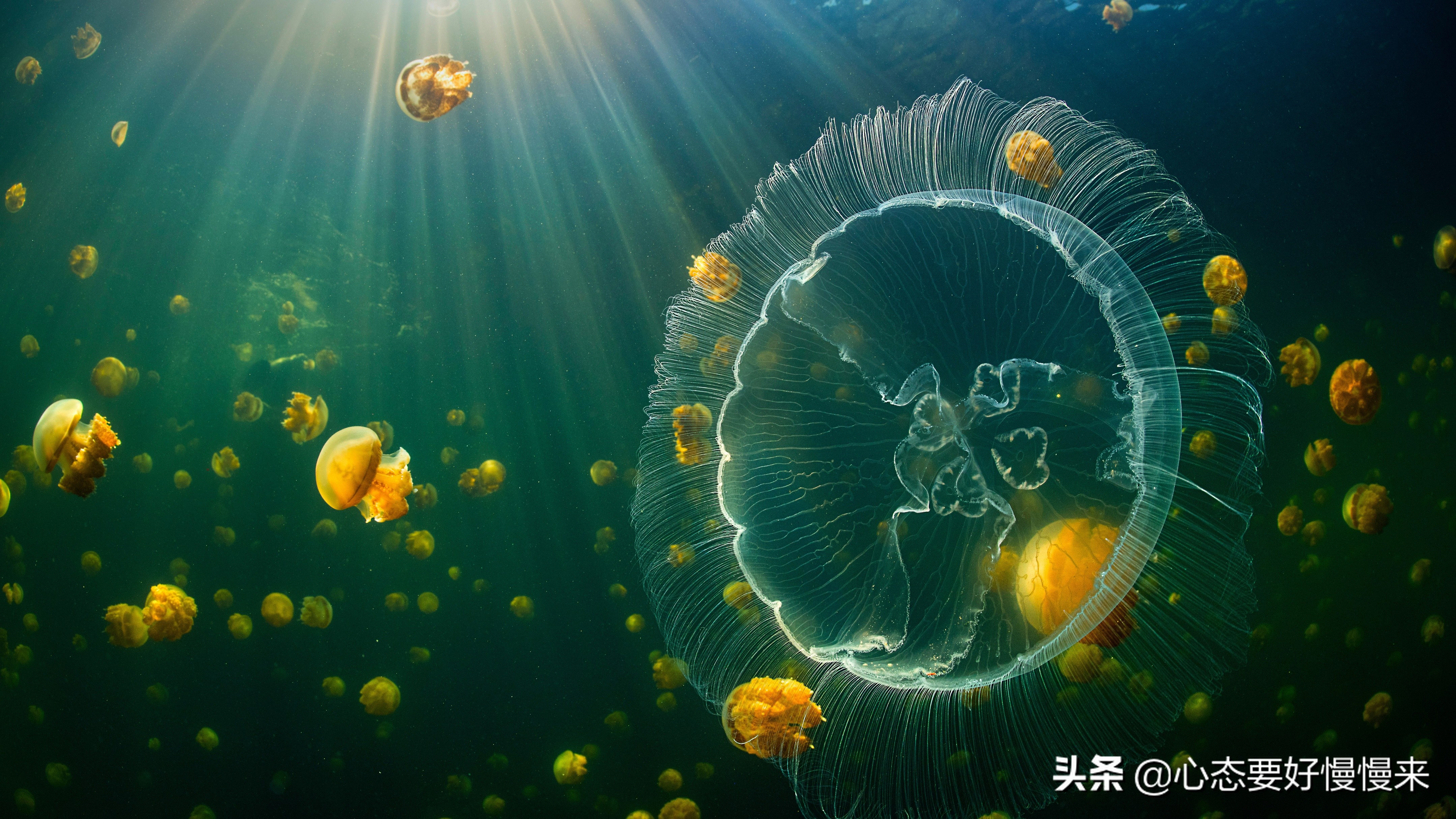
The marine jellyfish is one of the most common jellyfish and can be found on the coasts of almost all continents in the world.
Named after its moon-like bell-shaped body, this jellyfish is almost entirely translucent, about the size of a plate. Its four horseshoe-shaped gonads can be seen from the top of the bell. While there are more golden jellyfish in our photos, the golden jellyfish in the background are much rarer and only live in the ocean lakes of the South Pacific, such as this one in Indonesia.
Lunar jellyfish feed on plankton, including molluscs, crustaceans, anthocyst larvae, rotifer phylum, juvenile polychaetes, protozoa, diatoms, fish eggs, and other small organisms. Jellyfish and larvae of the genus Marine Jellyfish have spiny cells that can catch prey and protect themselves. The prey is stuck in mucus, which is then sent into the stomach circulation cavity by cilia, and digestive enzymes break down the food. From the digestive enzymes they have, it is known that they generally need carbohydrates, proteins and lipids, and little is known about the vitamins and minerals they need. The moon jellyfish have a large number of natural predators, including sunfish, leatherback turtles and the very large Victorian multi-tube luminous jellyfish. Sea moon jellyfish are also preyed upon by seabirds. Some parasites also attack sea moon jellyfish.
The sea moon jellyfish is colorless and transparent, disc-shaped, about 10-30 cm in diameter, and 98% of the body is water. When floating, the outer umbrella is up and the lower umbrella is down. The umbrella has a square mouth in the center, and a drooping wrist at the corner of the mouth. The four horseshoe-shaped gonads are pink.
There are many spine cells in the oral wrist that can release the spine to paralyze small invertebrates, which are then swallowed into the mouth and through the mouth into the stomach. The stomach is larger, protruding from 4 gastric sacs. After the food is digested, it is transported throughout the body by a radiation tube, and the undigested residue is still discharged from the mouth. Breathing and excretion are carried out through the surface of the body in contact with water.
Like many jellyfish, the shape of the moon jellyfish on the surface of the water resembles the alternation of hydra and jellyfish. After the male jellyfish releases sperm, it enters the umbrella reproductive organs through the mouth of the female jellyfish, combines with the egg to form a fertilized egg, and then excretes it from the mouth of the female jellyfish. After the fertilized eggs float in the water for a period of time, they form floating wave larvae, which have a large number of cilia on the surface of the larvae to swim. They are an important part of plankton. The larvae develop into a solid matrix after attaching to the hydra. When nutrients are adequate, the hydra produces a disc by sprouting (asexual reproduction) and then develops into a mature jellyfish.
Sea moon jellyfish die naturally after a few months of survival and reproduction. Rarely live longer than 6 months in the wild, but some survive up to several years in aquariums. Warm currents in late summer cause their food intake to decrease, causing their tissue regeneration rate to decline at the same time, when they are particularly susceptible to bacterial infections. In addition, seasonal reproduction also causes them to open the reproductive glands and become infected.
Jellyfish's stinging cells are somewhat similar to the murderous maniacs that never go away in horror movies. The separated tentacles of jellyfish, or even the separated tentacles of dead jellyfish, can sting you, except of course for this golden jellyfish.